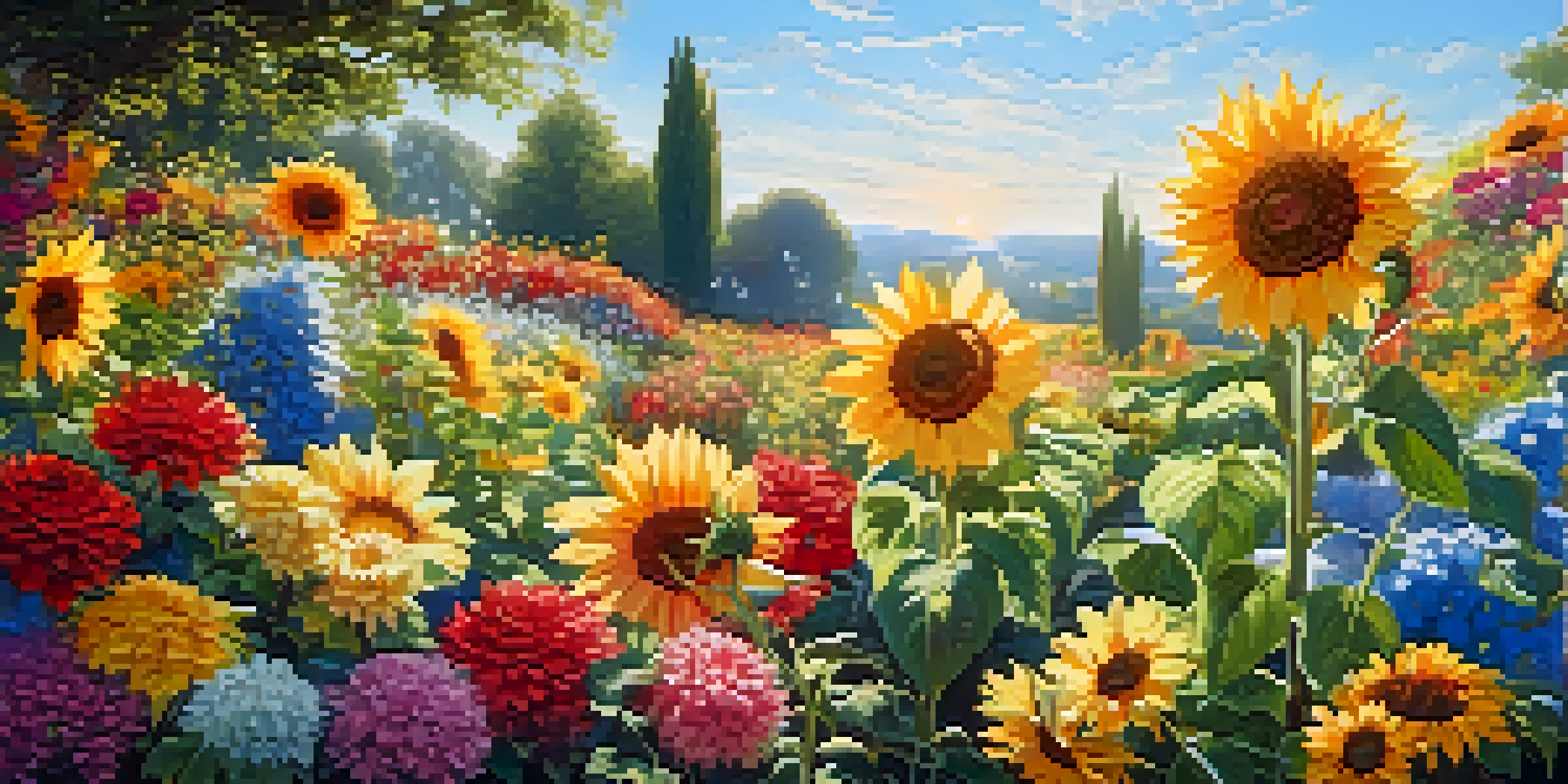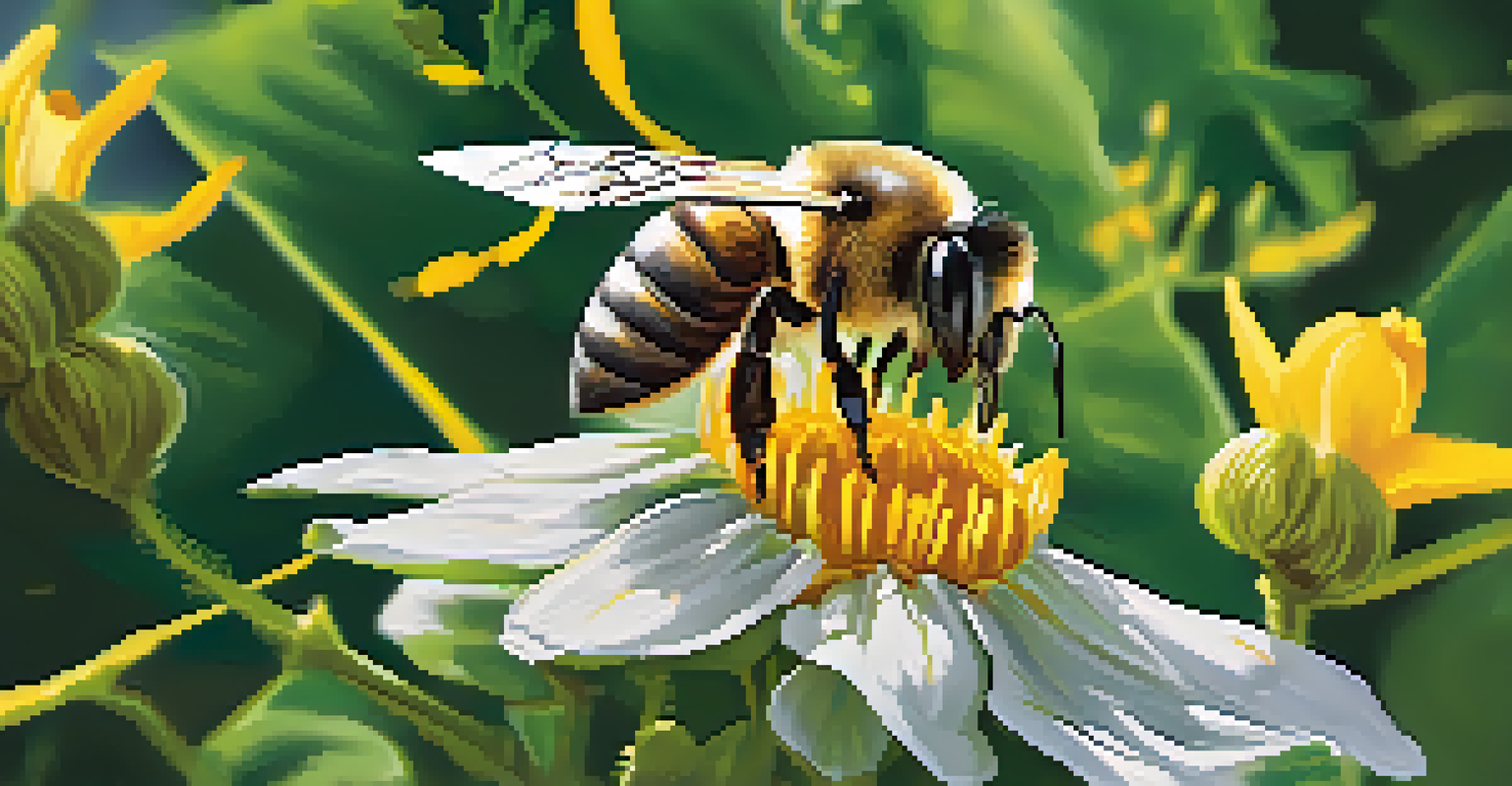Flowers: The Morphological Wonders of Plant Reproduction

Understanding the Basics of Flower Morphology
Flowers are intricate structures that serve as the reproductive organs of angiosperms, or flowering plants. Their morphology, or form and structure, is essential for attracting pollinators and facilitating reproduction. At their core, flowers are composed of various parts, including petals, sepals, stamens, and carpels, each playing a specific role in the reproductive process.
Flowers are the music of the ground. From earth's lips they flow.
To put it simply, think of a flower as a well-coordinated team, where each member has a unique responsibility. The vibrant petals are like the welcoming committee, inviting pollinators with their colorful displays and enticing scents. Meanwhile, the stamens and carpels work behind the scenes to ensure successful fertilization, showcasing nature's remarkable planning and design.
Understanding flower morphology not only enhances our appreciation of nature but also sheds light on the evolutionary adaptations that have allowed plants to thrive. By examining the diverse shapes and sizes of flowers across species, we can discover how these adaptations meet the demands of their environments and ecological partners.
The Role of Pollination in Flower Reproduction
Pollination is a critical process in the life cycle of flowering plants, enabling fertilization and the production of seeds. Birds, bees, butterflies, and even the wind play essential roles in transferring pollen from one flower to another. This transfer is vital for genetic diversity, ensuring that plants can adapt to changing environments over time.

Imagine a flower as a social gathering, where each pollinator acts as a guest bringing new ideas to the table. When a bee visits a flower, it gathers pollen and inadvertently transfers it to another flower of the same species, creating a beautiful exchange of genetic material. This interaction not only supports the survival of the plant but also fosters a thriving ecosystem.
Flowers are vital for reproduction
Flowers serve as essential reproductive organs for angiosperms, attracting pollinators to facilitate fertilization.
Understanding pollination can help us appreciate the delicate balance of nature and the interdependent relationships among species. As we learn more about the various pollinators and their preferences, we can work towards protecting these vital creatures and their habitats.
The Diversity of Flower Structures and Functions
One of the most fascinating aspects of flowers is their incredible diversity in structure and function. From the simple, single-petal blooms of the buttercup to the elaborate, multi-layered roses, each flower has evolved unique characteristics suited for its environment. This diversity is not merely aesthetic; it plays a crucial role in attracting specific pollinators and ensuring successful reproduction.
The earth laughs in flowers.
Consider the sunflower, which has a composite structure made up of many small flowers called florets. Each floret can produce seeds, making sunflowers both visually striking and highly efficient in reproduction. This adaptation allows them to maximize their chances of pollination and seed production in a competitive ecosystem.
By studying the diversity of flower structures, we can gain insights into the evolutionary pressures that shape plant life. Each unique design tells a story of survival, adaptation, and the intricate relationships between plants and their pollinators.
The Impact of Environmental Factors on Flower Development
Environmental factors significantly influence flower development, including light, temperature, and soil conditions. These elements can dictate when a plant blooms and how successful its reproductive efforts will be. For instance, some flowers are programmed to bloom only in response to specific temperature ranges or day lengths.
Think of it like a finely tuned orchestra, where each instrument relies on the right conditions to play in harmony. If temperatures rise too quickly in spring, certain flowers may bloom prematurely, leaving them vulnerable to late frosts. This delicate timing illustrates the tightrope that plants walk in their quest for reproduction.
Pollination ensures genetic diversity
The process of pollination, involving various creatures and environmental factors, promotes genetic diversity and ecosystem health.
Understanding how environmental factors affect flower development is crucial, especially in the face of climate change. As conditions shift, plants may struggle to adapt, leading to potential declines in flowering and subsequent impacts on entire ecosystems.
The Evolutionary Significance of Flower Color and Shape
Flower color and shape are not just for our visual delight; they are vital for attracting specific pollinators. Bright colors, such as yellows and reds, often signal to bees and butterflies that nectar is available. Conversely, flowers that bloom at night may be white or pale, designed to attract moths and other nocturnal pollinators.
Imagine a flower as a billboard, advertising its offerings to potential pollinators. The color and shape of each flower are carefully crafted to catch the attention of its target audience. This strategic approach not only enhances the chances of pollination but also influences the genetic makeup of future generations.
By studying the evolutionary significance of flower color and shape, we can better understand the intricate relationships between plants and their pollinators. This knowledge can inform conservation efforts, helping to protect vulnerable species and their habitats.
The Importance of Flowers in Ecosystems and Human Life
Flowers play a vital role in ecosystems, serving as food sources for pollinators and contributing to the overall health of the environment. Their ability to produce seeds ensures the continuation of plant species, which in turn supports entire food webs. Without flowers, many ecosystems would struggle to function effectively.
On a personal level, flowers enrich our lives in countless ways. From the beauty of a blooming garden to the joy of receiving a bouquet, flowers have a unique ability to uplift our spirits. They are also crucial for agriculture, providing fruits, vegetables, and seeds that sustain human populations.
Conservation protects ecosystems
Conservation efforts for flowering plants are crucial for maintaining biodiversity and supporting the ecosystems that depend on them.
Recognizing the importance of flowers in both ecosystems and human life can inspire us to protect these vital organisms. By supporting local flora and promoting conservation efforts, we can ensure that future generations enjoy the beauty and benefits that flowers provide.
Conservation Efforts to Protect Flowering Plants
With the increasing threats of habitat loss and climate change, conservation efforts for flowering plants are more critical than ever. Organizations around the world are working to protect native species and restore habitats that support biodiversity. These initiatives not only help preserve plant life but also safeguard the entire ecosystems that rely on them.
Think of conservation as a team effort to ensure that the vibrant tapestry of life continues to flourish. By creating protected areas, promoting sustainable practices, and raising awareness about the importance of flowering plants, we can make a significant impact. Every small action contributes to a larger cause, nurturing the delicate balance of nature.

As individuals, we can play a role in these conservation efforts by supporting local initiatives and choosing native plants for our gardens. This not only enhances our surroundings but also creates habitats for pollinators and other wildlife, fostering a thriving ecosystem.